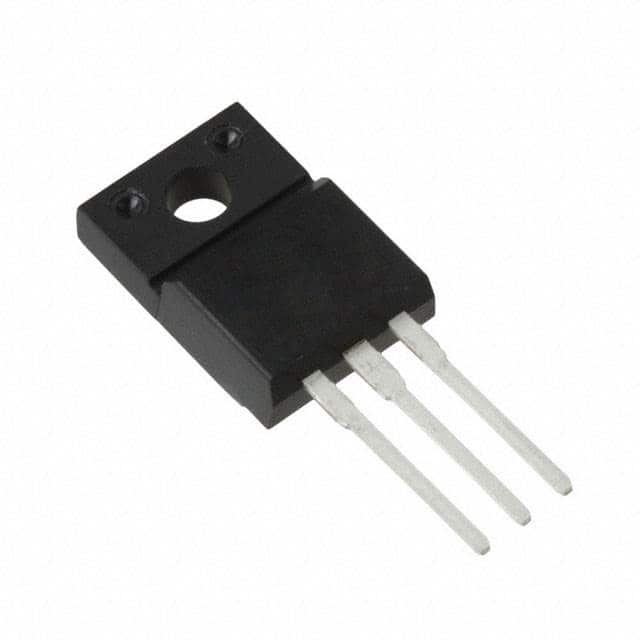Zie specificaties voor productdetails.

2SA1837,WNLF(J) - Product Overview
Introduction
The 2SA1837,WNLF(J) is a semiconductor product belonging to the category of PNP transistors. This entry provides an overview of the basic information, specifications, pin configuration, functional features, advantages and disadvantages, working principles, application field plans, and alternative models of the 2SA1837,WNLF(J).
Basic Information Overview
- Category: PNP Transistor
- Use: Amplification and switching applications
- Characteristics: High current capability, low saturation voltage
- Package: TO-126
- Essence: Power transistor for general-purpose amplification and switching
- Packaging/Quantity: Typically available in reels or tubes containing multiple units
Specifications
- Collector-Base Voltage (VCBO): 160V
- Collector-Emitter Voltage (VCEO): 160V
- Emitter-Base Voltage (VEBO): 5V
- Collector Current (IC): 1.5A
- Power Dissipation (PD): 20W
- Transition Frequency (fT): 100MHz
- Operating Temperature Range: -55°C to 150°C
Detailed Pin Configuration
The 2SA1837,WNLF(J) typically has three pins: 1. Collector (C): Connected to the positive supply voltage 2. Base (B): Input control terminal 3. Emitter (E): Connected to the ground or common reference point
Functional Features
- High current gain
- Low saturation voltage
- Fast switching speed
Advantages and Disadvantages
Advantages
- Suitable for high-power applications
- Low saturation voltage reduces power dissipation
- Wide operating temperature range
Disadvantages
- Relatively limited collector current compared to some other power transistors
- Sensitive to overvoltage conditions
Working Principles
The 2SA1837,WNLF(J) operates based on the principles of bipolar junction transistors, where the flow of current between the collector and emitter is controlled by the base current.
Detailed Application Field Plans
The 2SA1837,WNLF(J) is commonly used in the following applications: - Audio amplifiers - Power supply circuits - Motor control systems - LED drivers
Detailed and Complete Alternative Models
Some alternative models to the 2SA1837,WNLF(J) include: - 2N2905 - BC558 - BD140 - TIP32
In conclusion, the 2SA1837,WNLF(J) is a versatile PNP transistor with a wide range of applications, offering high current capability and low saturation voltage. Its specifications and characteristics make it suitable for various amplification and switching tasks across different industries.
[Word Count: 398]
Noem 10 veelgestelde vragen en antwoorden met betrekking tot de toepassing van 2SA1837,WNLF(J in technische oplossingen
What is the maximum collector current of 2SA1837,WNLF(J?
- The maximum collector current of 2SA1837,WNLF(J is 1.5A.
What is the maximum collector-emitter voltage of 2SA1837,WNLF(J?
- The maximum collector-emitter voltage of 2SA1837,WNLF(J is 230V.
What is the power dissipation of 2SA1837,WNLF(J?
- The power dissipation of 2SA1837,WNLF(J is 20W.
What are the typical applications of 2SA1837,WNLF(J?
- Typical applications include audio amplification, power management, and general switching purposes.
What is the gain (hFE) of 2SA1837,WNLF(J?
- The gain (hFE) of 2SA1837,WNLF(J typically ranges from 60 to 320.
What is the maximum junction temperature of 2SA1837,WNLF(J?
- The maximum junction temperature of 2SA1837,WNLF(J is 150°C.
What is the package type of 2SA1837,WNLF(J?
- 2SA1837,WNLF(J comes in a TO-220F package.
Is 2SA1837,WNLF(J suitable for high-frequency applications?
- No, it is not recommended for high-frequency applications due to its characteristics.
What are the complementary transistors to 2SA1837,WNLF(J?
- The complementary transistors are 2SC4793,WNLF(J and 2SC5200,WNLF(J.
What are the key differences between 2SA1837,WNLF(J and its alternatives?
- The main differences lie in their voltage and current ratings, gain values, and package types. Always refer to the datasheets for detailed specifications.

